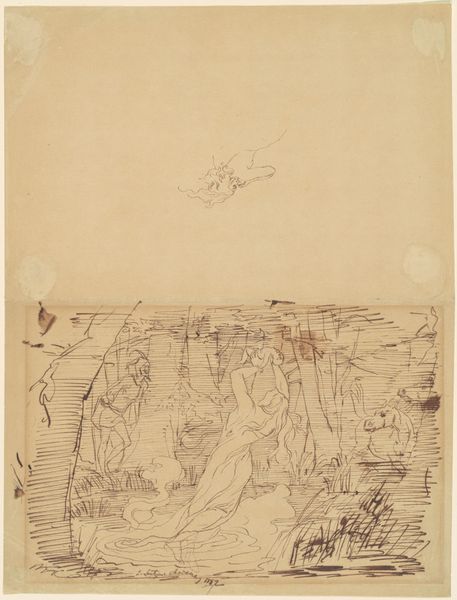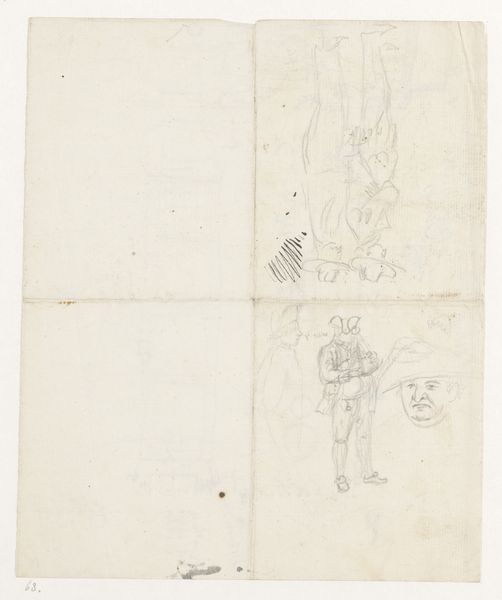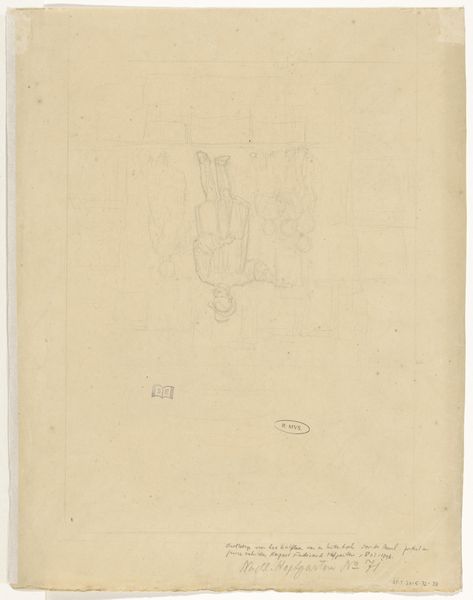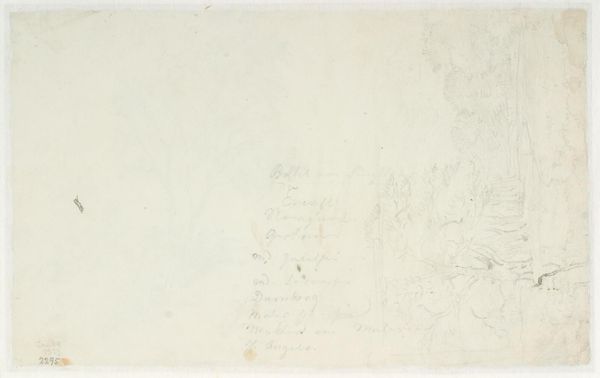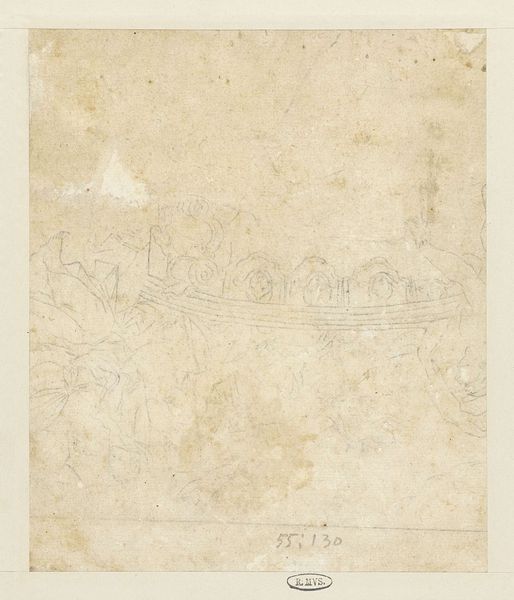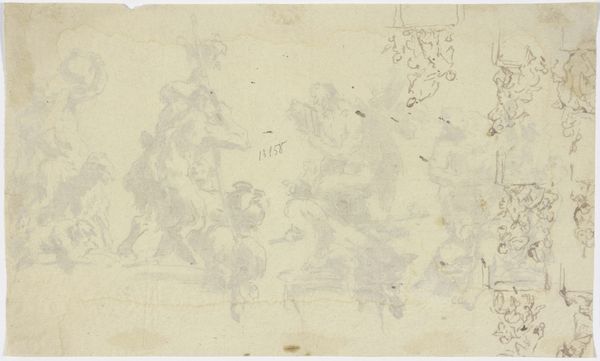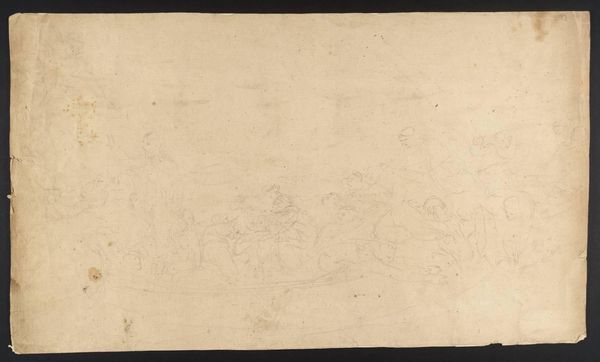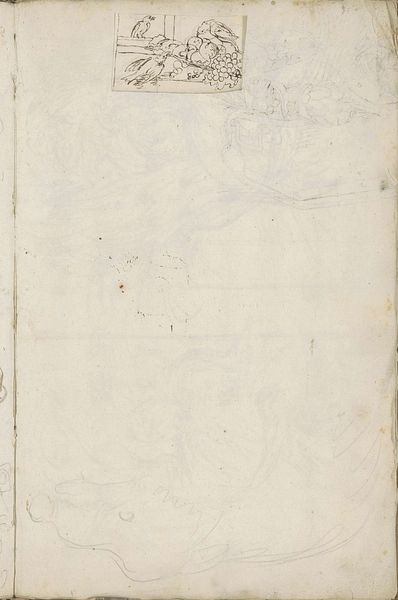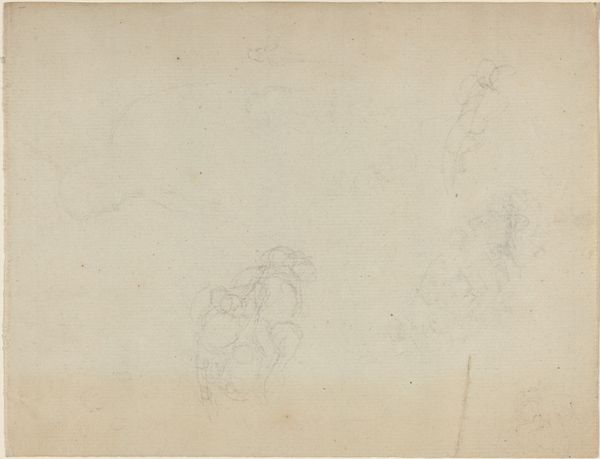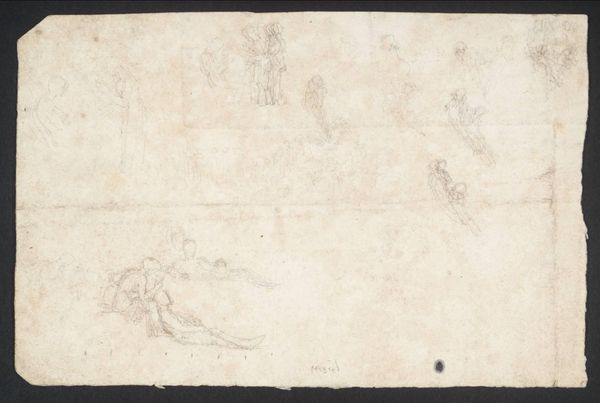![Sheet of Studies [recto and verso] by John Flaxman](/_next/image?url=https%3A%2F%2Fd2w8kbdekdi1gv.cloudfront.net%2FeyJidWNrZXQiOiAiYXJ0ZXJhLWltYWdlcy1idWNrZXQiLCAia2V5IjogImFydHdvcmtzLzkyZTJiMjM3LTEzOTMtNGM1Ni05MjM4LWUxOTQ5ZTQ2ZWY2ZC85MmUyYjIzNy0xMzkzLTRjNTYtOTIzOC1lMTk0OWU0NmVmNmRfZnVsbC5qcGciLCAiZWRpdHMiOiB7InJlc2l6ZSI6IHsid2lkdGgiOiAxOTIwLCAiaGVpZ2h0IjogMTkyMCwgImZpdCI6ICJpbnNpZGUifX19&w=3840&q=75)
drawing
#
photo of handprinted image
#
drawing
#
aged paper
#
toned paper
#
light pencil work
#
ink paper printed
#
tea stained
#
fading type
#
ink colored
#
watercolour bleed
#
watercolor
Dimensions: overall: 22.1 x 18 cm (8 11/16 x 7 1/16 in.)
Copyright: National Gallery of Art: CC0 1.0
This sheet of studies was created by John Flaxman, likely in the late 18th or early 19th century, using graphite on paper. The immediacy of graphite allows for quick, iterative sketches, and the texture of the paper subtly influences the marks made, giving a granular quality to the delicate lines. Each miniature composition, seemingly exploring classical themes, reveals Flaxman's engagement with form and narrative. The efficiency of graphite lends itself perfectly to prolificacy. Sheets like these were essential for artists to explore ideas and compositions before committing to more laborious and expensive media. Drawing was a vital skill, and it formed the basis for many forms of production during this period. Whether destined for prints, sculptures, or decorative arts, these drawings reflect a social context where artistry was intimately linked to craft and manufacturing. Appreciating this work involves considering its place within a larger system of creative labor, where ideas were constantly refined and adapted across different materials and scales.
Comments
No comments
Be the first to comment and join the conversation on the ultimate creative platform.

